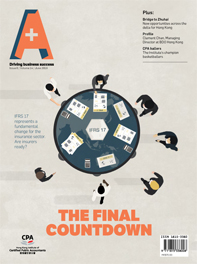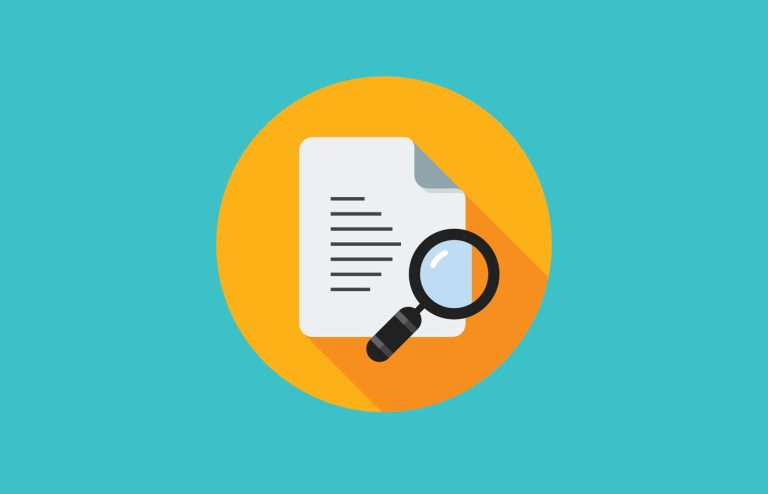Imagine a global insurer with operations in several different countries preparing its annual results. It may be consolidating numbers produced under Hong Kong generally accepted accounting principles (GAAP) with ones from French GAAP and South African GAAP to create a set of financial statements that will then be issued in the United Kingdom.
While this scenario may sound unlikely, it is exactly what can happen under the existing insurance accounting standard International Financial Reporting Standard (IFRS) 4, which allows a significant variation in the treatment of insurance contracts for companies operating in different countries.
But this practice will end on 1 January 2021 when IFRS 17 comes into force. The standard, which replaces IFRS 4, will introduce consistent accounting standards for insurers in all IFRS jurisdictions for the first time.
The project has taken the International Accounting Standards Board (IASB) nearly 20 years to finalize, and, reflecting the complexity of IFRS 17, insurance companies have been given three and a half years to implement compliance with it – one of the longest ever lead-in times for an IFRS.
New requirements
At its heart, IFRS 17, or HKFRS 17 (the Hong Kong interpretation of the international standard), will make insurance companies more comparable by being more prescriptive about the way they treat insurance contracts on their balance sheets.
Hong Kong Institute of CPAs member Raymond Lo, Chief Financial Officer at insurer FWD Hong Kong and Macau and a member of both the Hong Kong Federation of Insurer’s IFRS 17 Taskforce and the Institute’s Insurance Regulatory Advisory Panel, explains that IFRS 4 only defined the meaning of an insurance contract. “Consequently, there is a wide range of practices. Some companies use United States GAAP, while others favour the local statutory basis or prefer to follow the practice of their European parents,” he says. IFRS 4 also led to some companies effectively using solvency valuations and practices to account for insurance contracts, with deposits often counted as revenue.
Stephen O’Hearn, Global Insurance Leader at PwC, explains that by contrast, IFRS 17 requires companies to determine the best estimate of cash flow on their products, and then change the accounting model so that profit emerges over the course of those cash flows. “This is a much more economic approach to profit emergence and, in addition to being more reflective of economics, there is significant value in the improved consistency that IFRS 17 brings around the world,” he says.
“This is a much more economic approach to profit emergence and, in addition to being more reflective of economics, there is significant value in the improved consistency that IFRS 17 brings around the world.”
IFRS 17 Insurance Contracts is based on a series of four building blocks looking at cash flows, discount rates, risk adjustments and the contractual service margin (CSM). Francesco Nagari, Global IFRS Insurance Leader at Deloitte, explains that the new standard requires insurance companies to estimate cash flow for an insurance contract, including factors such as payouts for insured events, potential policy lapses and surrenders.
When using discount rates, insurers must consider market rates of the same currency, duration and level of liquidity, while they must also make an explicit provision for prudence, something neither life nor general insurance companies had to do under IFRS 4, where prudence has been provided for implicitly. Nagari says: “Transparency under IFRS 17 means you have to do your best job in estimating your cash flows, and then you provide explicit risk adjustment to the level of prudence you believe is necessary to cope with the uncertainty – this is very, very, new.”
He adds that the fourth building block, the CSM, changes the practice by reporting explicitly the expected profit an insurer believes would come from selling an insurance contract. The CSM is effectively the deferred profit on the insurance contracts in-force at the balance sheet date and the major source of revenue and profit as insurance services are rendered. “For the first time, when people read these financial statements, they can see all these components,” Nagari says. “IFRS 17 gives you the basis to take all of these building blocks period after period, making absolutely clear the reconciliation between the balance sheet and profit and loss statement for insurance contracts, which is a first in Hong Kong reporting standards.”
Benefits and concerns
The most obvious benefit of IFRS 17 is the enhanced transparency and comparability it offers. “At the moment, the versatility and diversity in utilizing measurement models make profitability comparison difficult, if not impossible,” Lo says. “Under the new standard, the underlying measurement models, presentation and disclosures have been transformed.”
But despite the transparency it brings, insurers are concerned about the complexity of IFRS 17. He adds: “One overwhelming comment from the industry is that this standard is too complex to implement. Data requirements, down to individual contract level, dramatically change the whole finance and actuarial reporting processes.” O’Hearn agrees: “This is a brand-new set of rules and they are very full, very extensive, but no one has done it before. They are untried and complex.”
“This is a brand-new set of rules and they are very full, very extensive, but no one has done it before. They are untried and complex.”
One particularly controversial aspect of the new standard relates to the timing of profits being recognized, with some companies complaining they will initially see a dip in profits under the new standard. Nagari thinks this is a distinct possibility. He says: “I am not surprised that some insurers will find that the emergence of profit under the new rules will be slower than they were under IFRS 4.” But, he adds that other insurers may experience the opposite and see profits emerging faster.
Implementation challenges
Unsurprisingly, given the complexity of IFRS 17, the insurance sector foresees a number of challenges in implementing it. FWD is one of the world’s first insurance companies to start the process of implementation. In February, it announced it had selected Aptitude Software, a global financial software specialist, to drive the changes required to deal with IFRS 17. Lo says the published standard is ambiguous at times.
“Our financial controller, who is leading this project at FWD Hong Kong and Macau, has also been actively participating in the Hong Kong Insurance Implementation Support Group (HKIISG) organized by the Institute. We have already observed heated debates in the [IASB’s] Transition Resource Group regarding how to address the implementation challenges,” he says.
Joyce Lau, Chief Financial Officer at Target Insurance and an Institute member, said her company had been given conflicting advice from advisors as to how it should implement IFRS 17, with some advisors saying that, as a general insurer, they could do it in a very simplified way, while others said they must fulfil the prescribed approach. “For us as a general insurer, we do not have as many resources to interpret the standard that some life insurers have. We are heavily reliant on our advisors as to how we should proceed. We are looking for more clarity on what is the simplest way for us to adopt IFRS 17. It is pretty confusing.” She adds that she is also concerned that general insurers were not well represented at IASB discussion groups around the new standard, and this is reflected in the way IFRS 17 is applied to general insurers.
“We are heavily reliant on our advisors as to how we should proceed. We are looking for more clarity on what is the simplest way for us to adopt IFRS 17. It is pretty confusing.”
Another challenge relates to the data infrastructure that companies need to put in place in order to com- ply with the standard. Lo says: “The data requirement is rather substantial and there is a certain level of complexity in developing software and changing existing processes to capture the required transaction details.” He points out that data will need to be extracted from policy administration systems, distributors’ compensation systems, investment management systems, general ledgers and actuarial models. It is not difficult to imagine the complications, considering the number of IT systems involved,” he says.
There are also concerns that there may not be enough qualified professionals available to assist firms with the implementation of the new standard. “Although, Hong Kong is probably one of the richest pools of talent in Asia from an insurance accounting and actuarial perspective, demand for that talent will be very high and the possibility of a gap between the supply of Hong Kong actuaries and accountants and the demand from insurance companies is clearly a very real possibility,” Nagari says. He explains that the new IFRS 17 requirements call for a greater level of transparency in the way actuarial calculations are reported, with separate risk adjustments and CSM. “Implementing the actuarial systems that deliver these new numbers on top of what was done before or instead of what was done before is a big effort that calls for actuarial expertise combined with deep IFRS 17 knowledge.” Nagari adds that the fact that so many insurers have their regional headquarters in Hong Kong will have a multiplier effect, as companies look for talent to serve multiple geographies across the whole of Asia.
The implementation timetable may also cause issues, especially for small- and medium-sized insurers that have a lack of resources. O’Hearn points out that while the standard will first be used for half-year results in 2021, these figures will be compared with numbers for 2020.
“Companies really need to accelerate their processes, so they can start generating and analysing numbers in 2019 to ensure they get their head around what the results mean, how to interpret them, and how to explain them internally to management and externally to investors and analysts,” he says.
Investor advantages
While insurers are grappling with the complexities of IFRS 17, its introduction is expected to significantly simplify things for investors, who will be able to easily compare insurers both within the same market and different countries for the first time. O’Hearn thinks the consistency in reporting could also reduce the cost of capital for the sector. “That would be the ultimate benefit of this – if more capital flowed to the insurance industry because there was improved transparency on the economics of the product. I think that is a real possibility,” he says.
But he adds the investment community has some way to go to fully comprehend the new standard. “They are going to want to understand, initially at least, how to reconcile the key performance indicators (KPIs) that they rely upon today to a whole new set of KPIs that have really yet to be developed. Then, ultimately, how valuations of companies are influenced by these new KPIs – and that is going to take some time,” he says. He also anticipates increased volatility in company results following the introduction of the new standard. “Companies will need to be ready for that volatility and they will need to be able to explain it.”
Melissa Brown, Partner at Daobridge Capital, a China-focused direct investment and financial advisory firm, and a government-appointed lay member of the Institute’s Council, thinks the new standard will be particularly helpful to investors in Hong Kong due to the presence of large Chinese insurers here. “This is a marketplace that really pays a great deal of attention to the largest Mainland Chinese insurance companies, as not only do they have organic growth potential, but they are also huge players in the economy,” she said at the joint Institute-IFRS Foundation stakeholder dinner in January. But she added that from an investor perspective, Hong Kong is not endowed with a lot of analytical strength on insurance companies, so having a better accounting standard will be beneficial.
Importance for Hong Kong
The introduction of IFRS 17 is important to cement Hong Kong’s reputation as an international financial centre. O’Hearn thinks if Hong Kong wants the most advanced investment community, it must also have the most transparent financial reporting to provide to that investor community. Nagari agrees, pointing out that if Hong Kong is to retain its reputation as the leading financial services centre in Asia, investors need to be able to compare Hong Kong companies with other entities operating in the same sector globally.
“Insurance companies have not yet really experienced the fully-fledged comparability that comes from IFRS.”
He points out that one of the benefits, alongside more efficient capital markets, could be a higher level of transactions between insurance companies themselves, in terms of disposals and acquisitions. “Insurance companies have not yet really experienced the fully-fledged comparability that comes from IFRS,” he says. “It is only now with IFRS 17 that the insurance sector will have the chance to reap the opportunity.”
Hong Kong Insurance Implementation Support Group
The Institute has established the Hong Kong Insurance Implementation Support Group (HKIISG) to support the implementation of IFRS 17. The objectives of the HKIISG are to:
- Solicit, analyse, and discuss stakeholder questions raised regarding implementation of IFRS 17;
- Provide a forum for stakeholders to follow the discussion of questions raised;
- Identify implementation issues which need to be brought to the attention of the IASB’s Transition Resource Group on the standard;
- Identify areas of focus for educational activities; and
- Provide recommendations for the Institute’s Financial Reporting Standards Committee to consider, which may include submitting a question to the IFRS Interpretations Committee or writing to the IASB.
The group welcomes questions from those implementing the new standard and the minutes from its meetings can be found on its dedicated webpage.
The Institute is organizing two workshops on IFRS/ HKFRS 17 in July for life-insurers (16 July) and non-life insurers (25 July). The workshops are targeted at industry professionals who have acquired the basic principles of the new standard and wish to develop a working knowledge, more information is available on the Institute’s website.



















